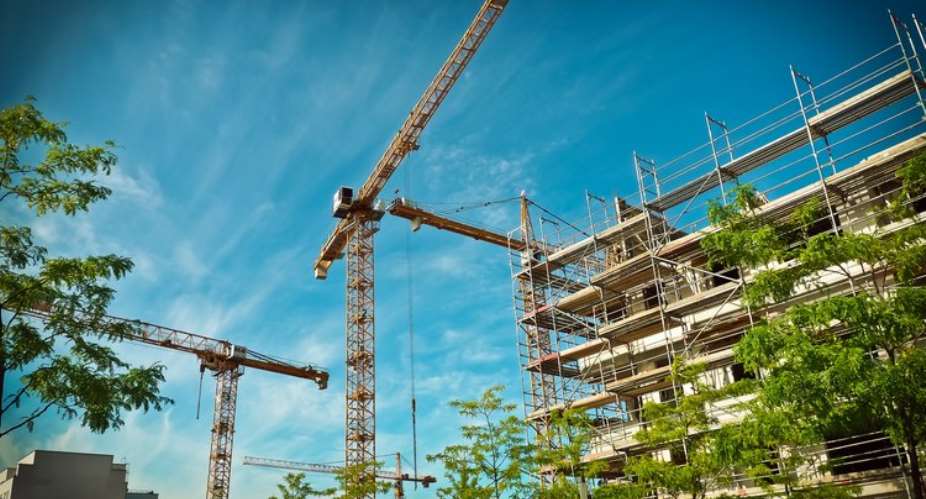When we look at our cities today, we can clearly see the interplay of interests contesting for power, positions and influence in shaping it. Aside governments, real estate developers, slum dwellers, and others are carving out the design of our cities. The physical manifestation of these big forces is what has created the language of our cities.
Months ago, I was taking a stroll in our capital (Accra). I saw different billboards of developers showcasing their products. To satisfy my curiosity, I tried to deconstruct some of the terminologies used on the billboards, as baits to get customers. I know you are now equally abreast with terms like the following: Green space, 1000 trees, cooler homes - and many more.
While the ‘sales literature’ tries to promise “a rare harmonious mix of privacy and community, nature and culture, tranquility and excitement”, why would anyone destroy a lot of vegetation, and later use this ‘vegetation’ as a selling code?
Upon studying in India, I observe the similar marketing gimmicks at play. This time, I felt the disconnect symbiotic relationship between nature and civilization in urban areas.
It would be wrong to undermine the effect of slums in our country. However, it is important to look closely at how current developers (private and government) are commodifying fresh air, trees and serene environment as a luxury goods!
When I walk done memory lane to the time of my childhood, I can say pure air, trees and serene environment was never something hard to come by. We lived with them! But, now, all these have been replaced with bricks and blocks. We have seen it with gated communities, high-rise building, studios, and apartments.
For how long are state agencies going to issue permits to developers to cut down our vegetation all in the name of development? Few years back, Ghanaians fought the proposed ecotourism project that targeted the Achimota forest. The said forest has for so many years helped curb runoff during rains, and given the communities around oxygen and health. The project was only abandoned after it came into the media, and received the bashing of well-meaning Ghanaians. The case of the Achimota Forest and now the Atewa Forest for mining is one and same: the greed of a few to make money at the expense of environmental considerations. The Atewa forest is in the deals with a mining proposal estimated to scoop 150 million tonnes of bauxite. It faces a lot of backlash from different stakeholders.
But the major concern is one that is inclined to wanton destruction of small vegetations every day in the name of development. And in return, the same vegetation which mostly are artificial are used as a unique selling point to us!
We are not blind to the benefits we get from real estate development such as broad internal roads, walkable streets with footpaths, 24/7 utilities supply, public spaces, multi-level security and conveniences like shopping, entertainment, hospitals and schools. Whiles majority of these are projects are well-thought through, the concern about the projects are that they are orchestrated for benefit of few elitists without regards for its repercussions on the environment.
All over the world today, climate change is a burning issue today. If we want to combat climate change, we have to hold all stakeholders accountable. It should not be limited to the end product of most manufacturing industries (with regards to plastic waste) but also unwarranted developments that threaten our urban decency, vegetative cover, and our social fabric. If most of our developments are well negotiated, we could solve slum developments in the long run.
For us to thrive in sustainability and combat climate changes, we have to change our behavior, systems and laws.





 We’ll no longer tolerate your empty, unwarranted attacks – TUC blasts Prof Adei
We’ll no longer tolerate your empty, unwarranted attacks – TUC blasts Prof Adei
 Bawumia donates GHc200,000 to support Madina fire victims
Bawumia donates GHc200,000 to support Madina fire victims
 IMF to disburse US$360million third tranche to Ghana without creditors MoU
IMF to disburse US$360million third tranche to Ghana without creditors MoU
 Truck owner share insights into train collision incident
Truck owner share insights into train collision incident
 Paramount chief of Bassare Traditional Area passes on
Paramount chief of Bassare Traditional Area passes on
 Two teachers in court over alleged illegal possession of BECE papers
Two teachers in court over alleged illegal possession of BECE papers
 Sunyani: Victim allegedly shot by traditional warriors appeals for justice
Sunyani: Victim allegedly shot by traditional warriors appeals for justice
 Mahama vows to scrap teacher licensure exams, review Free SHS policy
Mahama vows to scrap teacher licensure exams, review Free SHS policy
 Government will replace burnt Madina shops with a new three-story, 120-store fac...
Government will replace burnt Madina shops with a new three-story, 120-store fac...
